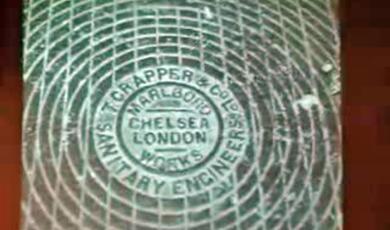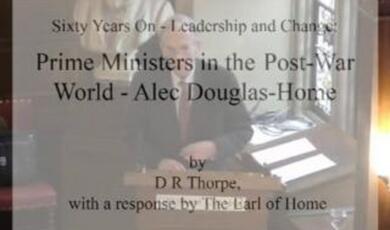History from Below: Mathematics, Instruments and Archaeology
Share
- Details
- Text
- Audio
- Downloads
- Extra Reading
In recent decades, archaeologists working on sites such as the Mary Rose have recovered a range of simple mathematical instruments.
Compared to typical museum artefacts, they are relatively humble wooden devices. Yet they shed important light on the distribution and variety of mathematical skills in early modern England.
Download Text
HISTORY FROM BELOW: MATHEMATICS, INSTRUMENTS AND ARCHAEOLOGY
Dr Stephen Johnston
The British Society for the History of Mathematics has an admirable tradition of treating mathematics in its broadest extent. As a museum curator, my principal interests revolve around things, in particular, the history of scientific and mathematical instruments. While my focus on objects sits somewhat uncomfortably with certain textbook approaches to the history of mathematics, I must say that I have always found the society to be notably generous and inclusive, open even to those with my own rather wayward material preoccupations.
Given that the society operates as a broad church, I don’t feel the need to rehearse in detail the general argument that instruments can be considered a part of the history of mathematics - though it follows very directly from considering early modern conceptions of the range and character of mathematics. Astronomy, cosmography, surveying and so on were simply accepted as a familiar part of the subject. And mathematics, while of course being intellectual and demonstrative, was commonly also identified as a material practice. It was widely understood as an instrumental activity.
This opens the door to a distinctively museum-based approach to the history of mathematics, and of practical mathematics in particular. However, and perhaps somewhat perversely, today I’m not dealing with the fine artefacts which have survived as collectors’ items in museums. Rather, I will begin with a tiny wooden sundial which has been preserved not in a princely collection but on the sea bed. It is one of several similar dials recovered from the wreck of the Mary Rose, Henry VIII’s warship which sank in 1545.
The archaeological recovery of these dials is both exciting and unsettling. We have histories of mathematical instruments which are based on texts and surviving museum instruments. But the sundials of the Mary Rose had not been preserved by the collectors’ route. They were unknown, and have only been identified archaeologically - 8 or so from the Mary Rose, a couple now in the Museum of London and 1 in Bury St Edmunds.
These objects are exciting because they indicate the existence of a range of instruments which were small and presumably cheap - instruments which must have been owned by a less elevated stratum of society than fine brass instruments. They suggest that simple sundials were already consumer items in the 16th century. (A number of those from the Mary Rose had mirrors, for no other obvious purpose than vanity!)
But they are also unsettling and troubling. If archaeology can identify a previously unsuspected swathe of manufacture and consumption, what else might we be missing about the period? Are the stories we tell on the basis of surviving instruments fatally skewed and selective?
Rather than falling prey to dismal pessimism, I want to talk about some recent archaeological recoveries of such humble devices. Coming from outside the familiar repertoire of elevated and advanced manufacture, they offer us a novel appreciation of the distribution and variety of mathematical skills in the early modern world.
Staying with the Mary Rose, we can look at the most basic of devices: measuring rulers with scales of inches. But these are inch divisions without numbers - feet are represented by circles and 6 inches by semicircles. These marks and divisions suggest competence in the manipulation of dimensions without the need for written ciphers. They suggest a world where formal numeracy is not necessary for the skilful practice of constructive geometry.
A specific example from the Mary Rose takes us somewhat further. This ruler, found in association with the tools of the ship carpenter, has on one side just the graphical graduation of inches - an arrangement of circles and semi-circles again, without any numerals. The reverse is rather different, carrying some indistinct numerals, which presumably indicate a greater level of sophistication on the part of the maker or user.
More significantly, there is also a sequence of incised lines which represents a much more remarkable achievement, and I want to take some time to follow the story that they suggest. These divisions run the length of the rule but their spacing is non-linear, so that they bunch up towards one end. To allow them to be visually distinguished when they are in close proximity the final divisions have been grouped under sloping lines - another neat graphic trick which suggests the same visual and manipulative skills deployed in the use of circles and arcs on the inch scales.
What are these incised lines? They are divisions on what is known as a timber scale, and this timber scale provides a way to reckon solid quantities without calculation. Before considering just what this means, let’s look at how it works.
Imagine a square piece of timber. The length of one side of the square is measured on the rule’s inch scale and the corresponding mark on the timber scale is located. Then the distance from that point to the end of the rule directly gives the length of a cubic foot of this timber. That dimension can be taken with a pair of dividers, such as would be found among the tools of any carpenter, whether on land or at sea. Then, stepping the dividers along the length of the timber allows the user simply to count out the cubic feet contained in the timber.
So we again have mathematical skills without formal symbolic representation: the “calculation” is done by manipulation of rulers and dividers rather than on paper.
What is the larger significance of this carpenter’s rule, with its distinctive timber scale? It is the earliest known example of such a device, and it helps us to think again about the relationship between craft mathematics and the written realm of textbooks.
From the late 16th century up to the 20th, it was generally thought that the timber scale was originated by Leonard Digges in his practical mathematical text Tectonicon. However this was published in 1556 - 11 years after the Mary Rose and its carpenter’s rule sank. The archaeology makes us look more carefully at this text where, on closer inspection, it turns out that Digges’s explicit aim was to correct and develop an existing instrument, rather than inventing a new device. Digges sought to improve a familiar craft device rather than introduce a new mathematical instrument. He showed how to construct such rules accurately rather than by blind copying, and provided instructions not only for a timber scale to measure solids but also for a board scale for planes.
What is interesting for our purposes is that once this carpenter’s rule entered the world of print and became the object of the attentions of mathematical practitioners it was quickly developed further.
A folding rule by the important London instrument maker Humphrey Cole illustrates this process nicely. This is an instrument of just the kind that does survive in museums - elegantly constructed and engraved in brass. Dating from 1574, it is a folding version of the carpenter’s rule as it had been envisaged and printed by Leonard Digges.
There are scales of timber and board measure, along with a tabulation of extended values under the headings of T and B. The connection between book and instrument is even clearer with the adoption and transformation of one of Digges’s innovations. The Mary Rose rule had inch scales on its reverse; Leonard Digges tried to squeeze a quadrant on to it, to allow for more generalised measurement. Cole goes one step better: he not only fits in a sundial but provides a much larger and more accurate quadrant which operates with a plumb bob dangling from one of the arms.
So the story here is not one of innovation in the world of practical mathematical texts and subsequent application to craft practice. Rather the artefacts show us the process in reverse: a pre-existing craft tradition of constructive geometry is appropriated, criticised and developed by authors.
Not that the literate world had a merely parasitical dependence on, or exploitation of, the relatively inarticulate craft realm. As we saw, once published, there were rapid developments and transformations in the more professional world of precision instrument production, a world closely allied to practical mathematics, and which typically produced collectible objects.
What happened to that prior craft tradition, represented by the Mary Roserule? Is it taken over and subsumed by the work of mathematical practitioners, such as Leonard Digges or Humphrey Cole? Does it simply disappear? Or does it continue in a separate, static world of its own?
Another artefact suggests that the answer may be more complex than either fossilised isolation or brute extinction. This is another carpenter’s rule, with the characteristic non-linear timber scale, found not on the sea bed but in a roof space. It was recovered by archaeologists dismantling Longport House near Folkestone and is now held by the Canterbury Archaeological Trust.
A wooden two foot rule, this is clearly not an elevated brass instrument, even when one discounts the breaks and woodworm damage which it has undergone. The rule carries the characteristic non-linear timber scale. However, unlike the Mary Rose rule, this example does have numerals, their rather ragged character again underlining that this is not readily identifiable as the product of a workshop such as Humphrey Cole’s.
The numerals include a date of 1635. But it has not just some numerals - it positively glories in them. One face is largely covered by a timber table: a numerical version of the timber scale which provides, for a given side of square timber, the length required to make a cubic foot. Far from relying on published versions, this table appears to be entirely independently calculated. And it is not just independent but positively idiosyncratic, using divisions of twentieths and sixtieths of an inch, which I cannot find elsewhere at the time.
That independence is reinforced by the presence of a table of square roots - necessary when your timber is not square but rectangular in section. In that case, the rectangular cross section needs to be converted into an equivalent square, whose side is found by extracting the square root of the product of the two sides. Hence the existence of a table of square roots: most people will avoid the challenge of manually extracting square roots, even (or perhaps especially) now.
Leonard Digges had given a more extensive table of this kind - but the maker of the wooden rule had again worked independently. Indeed there are some instructive entries in this table which suggest that the construction of the table was at the limits of its compiler’s abilities. The table works with values from 3 to 16 but has a curious property - the compiler evidently calculated each square root afresh - even when taking the root of a product already calculated. This does appear to be a significant variation and suggests that the calculator of the table did not notice or appreciate the labour-saving potential inherent in its structure, and was unable to extract square roots in a reliable or consistent way. (One possible explanation for the inconsistency is that the results were extracted geometrically, using mean and extreme proportion.)
This Longport rule is therefore somewhere between the homemade Mary Rose example and the expensive precision of Humphrey Cole. It is certainly intermediate in its making, since its numerals have been created by punches, whose ownership requires not only some capital but also the expectation of multiple manufacture. More generally, the style of the Longport rule’s numeracy suggests the existence of varying standards and markets, with complex patterns of connection and development between craft traditions and the realm of printed mathematics.
I have so far mostly talked about various carpenter’s rules, and the relation of their practical geometry to the skills and tradition of literate mathematics. Is my account specific to this intriguing but necessarily limited class of objects? I would like to think not, and so want to suggest briefly that similar sorts of stories can be told in other contexts.
Nautical archaeologists have of course been at work not only on the Mary Rose. A small wooden device recovered off St Malo a few years ago was initially thought to bear navigational or tidal information. While working on an exhibition on The Geometry of War several years ago I had consulted Samuel Sturmy’s The mariners magazine, or, Sturmy's mathematical and practical arts (1669), so could recognise the St Malo find as a gunner’s rule. The user simply sticks it into the gun’s mouth and reads off the weight of shot and the amount of gunpowder required for each calibre of ordnance.
The stepped rule was found on the wreck of what was probably a late 17th or early 18th-century French corsair. So imagine my interest when I saw that this gunner’s rule was clearly English (it carries English inches) and that it was dated 1648, well before Sturmy’s book. This is again a case where a simple craft instrument precedes any record of a device in print.
In the case of the carpenter’s rules there was a clear sequence which went from the craft realm of the Mary Rose, through the printed text of the gentleman Leonard Digges, and on to the ingenious and exquisite work of Humphrey Cole who, as well as being a mathematical instrument maker in brass, also held a much-coveted post at the Mint.
The same elements are present in the case of the gunner’s rule, but not in quite the same sequence. I have subsequently seen a scan of a surviving brass example of this pattern of gunner’s rule, dated between the wooden St Malo rule and the publication of Sturmy’s book. Although this evidence therefore tells a slightly different story, it is clear that the brass gunner’s rule is significantly more elaborate and closer to the printed version than to the rough wooden instrument.
Conclusions
In devoting so much attention to archaeologically recovered artefacts today, it might be thought that I have set aside museum collections (such as my own), treating them as inherently too fine, elaborate and collectible to shed useful light on mundane practice. But in moving towards some conclusions I do not want to leave an impression that archaeology and museum instrument collections should be entirely polarised, with the former overcoming the limitations of the latter.
Once exposed to these archaeological artefacts with their rather naïve and homespun decorative style, items otherwise relegated to a drawer in a museum store suddenly leap sharply into focus. I stumbled across a rule strikingly similar in style to the Longport example while browsing through the displayed storage of the Whipple Museum in Cambridge. Dated 1648, it carries not a timber scale but a board scale of the type that Leonard Digges had publicised a century earlier. Yet it also carries compact tables of both board and timber measure. There is clearly much more work to do to characterise these devices and identify the social and intellectual identities of their makers and users, and we may find relevant evidence not only freshly excavated but lying previously unnoticed in museum collections.
Finally, a more general thought. Some may find their patience tried by my extended regard for banal and humble instruments. Perhaps it might be thought that the artefacts that I’ve been dealing with relate to very basic levels of competence, in some cases apparently below the threshold of formal mathematical skill. Perhaps it is tempting to set such matters aside, as being too rudimentary for detailed analysis.
Yet if we think of the work done in the last 20 years on ethnomathematics and cognitive research, I think there are clear parallels which justify my focus and suggest its larger possibilities. Within ethnomathematics and cognition studies there have been detailed investigations of the calculating techniques of everyone from Brazilian street children to Californian supermarket shoppers. What these studies make clear is the extraordinary divergence between forms of numeracy and calculation in different settings. Quite different competences are exhibited when subjects practice in formalised school settings as opposed to more concrete circumstances of work and leisure.
In presenting my archaeology of practical mathematics I hope I’ve suggested that apparently simple and crude devices give us the same sort of window onto the diversity of past mathematical experience. We can see beyond the library realm of texts and even beyond the elite level of “museum grade” artefacts, to glimpse mathematical skills and competences as actually performed in the working life of early modern England.
© Dr Stephen Johnston, Gresham College, 3 November 2005
This event was on Thu, 03 Nov 2005
Support Gresham
Gresham College has offered an outstanding education to the public free of charge for over 400 years. Today, Gresham College plays an important role in fostering a love of learning and a greater understanding of ourselves and the world around us. Your donation will help to widen our reach and to broaden our audience, allowing more people to benefit from a high-quality education from some of the brightest minds.


 Login
Login







